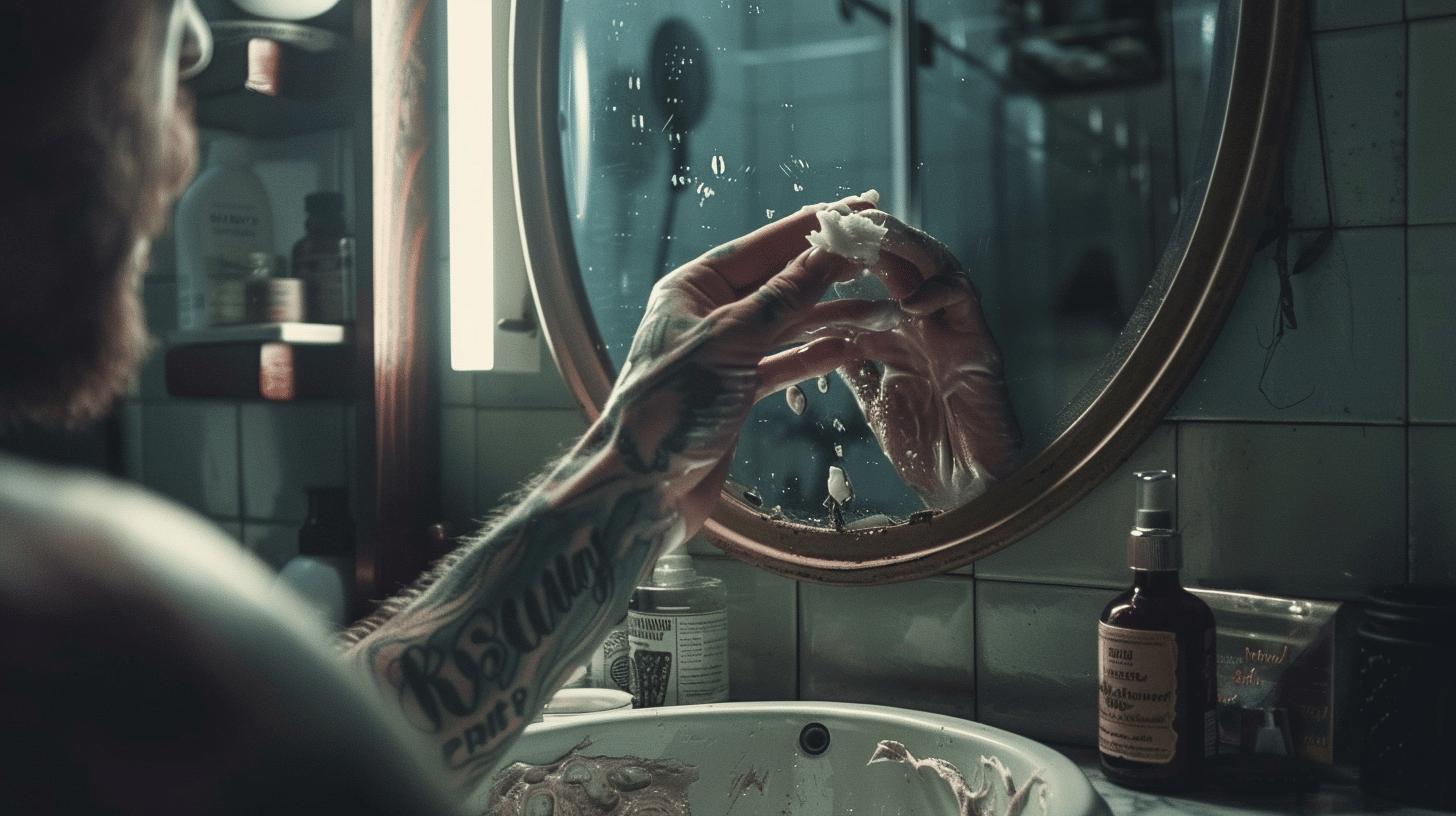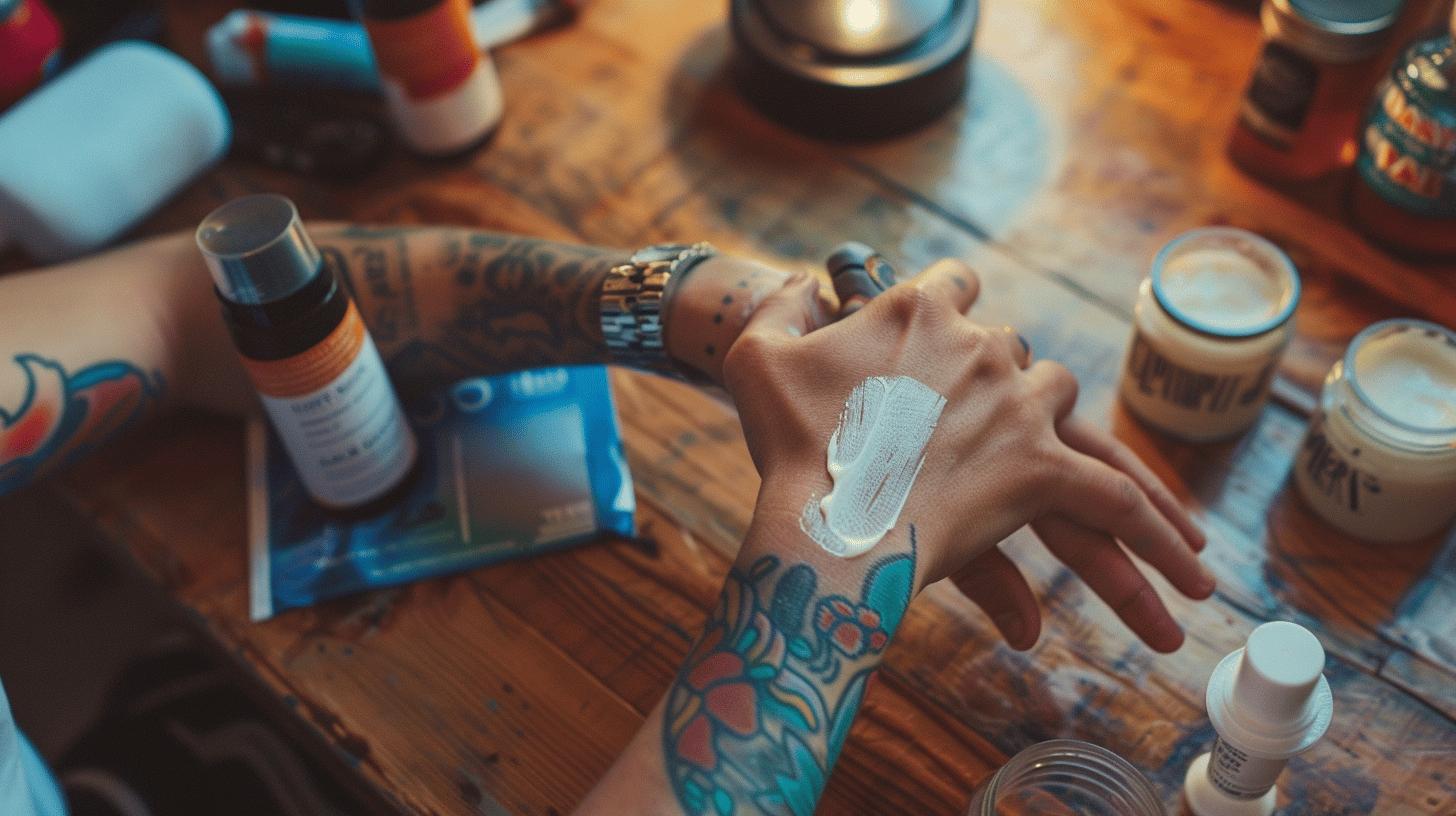Best Tattoo Removal Creams: Safer Alternatives to Laser for Fading Old Ink
Thinking about using a tattoo removal cream to erase old ink? You’re not alone. While laser tattoo removal tends to steal the spotlight, not everyone wants to deal with the cost, pain, or healing time that comes with it. That’s where over-the-counter tattoo removal cream steps in. But here’s the catch – does tattoo removal cream work, or is it just clever marketing? In this guide, we break down how to remove tattoos with cream, what ingredients actually matter, and how to spot the best tattoo removal cream that actually works – without burning your skin or your wallet.
How Tattoo Removal Creams Work on Skin and Ink

How does tattoo removal cream work?
Tattoo removal creams work by chemically altering the upper layers of the skin to fade or reduce the appearance of tattoo ink. Most creams target the epidermis, where older or shallow tattoos may sit closer to the surface. They rely on either exfoliating agents or bleaching compounds to break down the tattoo pigment or lighten the skin around the ink, making the tattoo less visible.
What’s the difference between bleaching and exfoliating tattoo removal creams?
Bleaching creams contain agents like hydroquinone that lighten the skin rather than directly affecting the ink. They’re often used to fade the appearance of tattoos by reducing surrounding melanin. In contrast, exfoliating creams—often those containing trichloroacetic acid (TCA)—remove layers of dead skin, which can gradually cause superficial ink to break down and shed with the skin cells. Neither method is capable of full tattoo removal, but both can promote tattoo fade over time, particularly on fair and light skin tones or older tattoos that have already partially faded.
The interaction between active ingredients and skin type plays a major role. Those with sensitive or darker skin tones may experience irritation or skin discolouration and permanent lightening. Tattoo removal creams are not considered a substitute for laser treatment, especially for deeper or multicoloured ink tattoos, but they remain a non-invasive option for those wanting to reduce visibility.
Here are 5 common active ingredients found in tattoo removal creams and how they work:
- Hydroquinone – A skin-lightening agent that helps fade the appearance of dark ink by reducing melanin production.
- Trichloroacetic Acid (TCA) – A chemical exfoliant that removes outer skin layers where shallow ink may reside.
- Kojic Acid – A melanin inhibitor that works similarly to hydroquinone but is often used in gentler formulations.
- Neem Oil – Found in natural products like Tattoo Destroyer, it may encourage fading by supporting healthy skin turnover.
- Alpha Arbutin – A plant-derived compound that lightens pigmentation and is often included in creams aiming to fade tattoos without harsh side effects.
Best Tattoo Removal Creams in the UK: Ranked and Reviewed
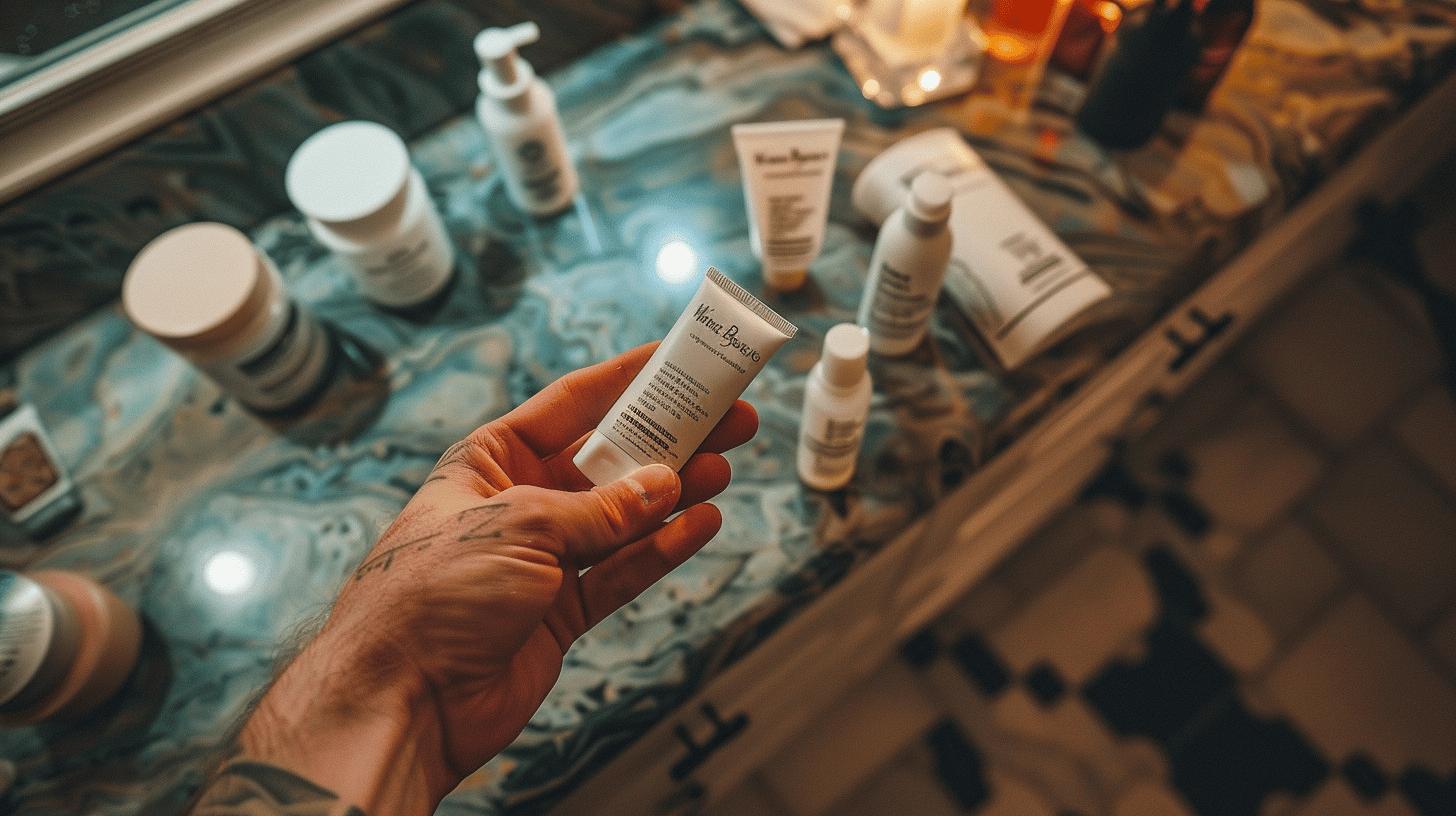
When it comes to choosing the best tattoo removal cream in the UK, buyers are often faced with a sea of products that promise to fade ink without the pain or price of laser tattoo removal. While no cream can guarantee complete removal, there are a few standout options that consistently feature in tattoo removal cream reviews for their visible results, ingredient quality, and ease of use. Below are the current top four creams, ranked by user satisfaction and product data.
- Tattoo Destroyer
Tattoo Destroyer is a 1-step natural cream that’s widely rated as the best tattoo removal cream for sensitive skin and those wanting a more natural approach. It contains neem oil, a plant extract known to support skin regeneration and fading over time. Many UK users report gradual tattoo fade over several weeks with daily application. No extra tools or steps needed—just apply and wait. - Wrecking Balm Tattoo Fade System
This is a multi-step cream and device combo that includes a microdermabrasion applicator and fading gel. The wrecking balm tattoo fade system works by exfoliating the area of the tattoo, helping to break down surface ink. It’s more aggressive than creams alone, making it better for older or heavily pigmented tattoos. That said, it requires consistent use and commitment. - Inked Up Tattoo Removal Cream
Known for its plant-based ingredients, Inked Up is designed for mild tattoo fade without harsh chemicals. It’s relatively gentle on most skin types and is often chosen by those with fair and light skin tones aiming to lighten older or faded tattoos. Although it’s less powerful than others, it’s praised for its minimal irritation and budget-friendly price. - Tat B Gone
Tat B Gone is a two-step system that includes both a fading cream and a moisturising aftercare cream. The dual approach aims to both remove a tattoo and protect skin during the process. It’s especially useful for tattoo aftercare following exfoliation-based methods. The results vary, but some users report visible fading within 6–8 weeks.Product Type (1-step/2-step) Key Ingredient Application Time Price Range Tattoo Destroyer 1-step Neem Oil Once daily £25–£40 Wrecking Balm Tattoo Fade System Multi-step Microdermabrasion Tool + Cream 2–3 times a week £35–£50 Inked Up Tattoo Removal Cream 1-step Plant Extracts Twice daily £10–£20 Tat B Gone 2-step Fading Cream + Moisturiser Once or twice daily £30–£45
Tattoo Fading Creams vs. Laser Removal: Which Works Better?
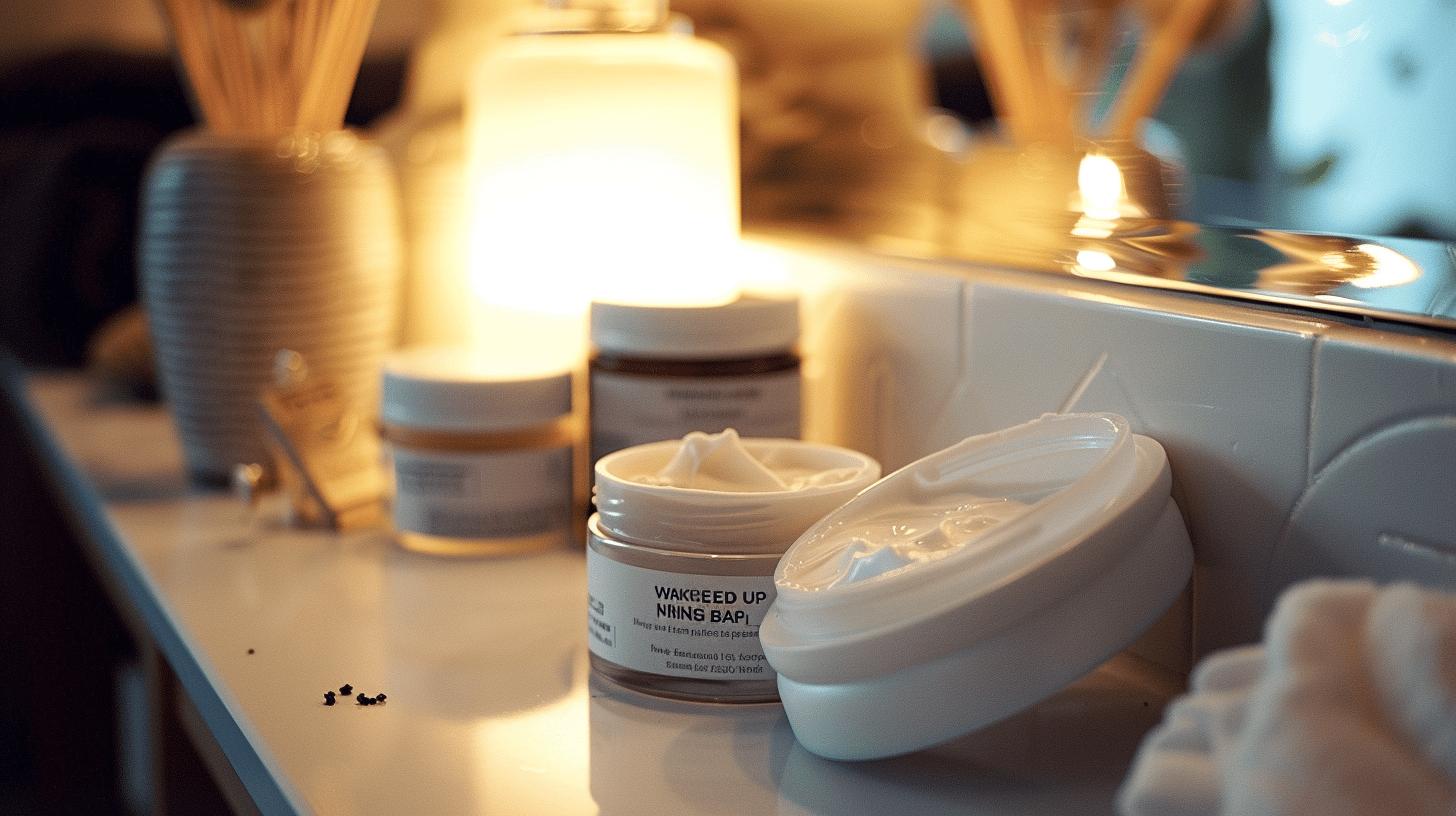
Which is more effective at removing a tattoo: laser or tattoo fading cream?
Laser treatment is more effective.
Laser tattoo removal targets the deeper layers of the skin where the tattoo ink is embedded. Using high-intensity light pulses, it breaks ink particles into smaller fragments, which the body then clears over time. This method can provide complete removal of tattoos—especially black or dark-coloured ink—within 4 to 10 sessions, depending on tattoo size, pigment density, and skin type.
Tattoo fading creams, by contrast, only work on the epidermis and cannot reach deeper dermal ink. Most tattoo removal creams work by either chemically exfoliating the skin using ingredients like TCA (trichloroacetic acid) or by lightening the area around the tattoo with bleaching agents. While they can make a tattoo less visible, especially older or faded pieces on fair skin tones, they do not offer complete removal and results vary widely.
What are the side effects of tattoo fading creams compared to laser?
Tattoo creams are less invasive but can still cause irritation.
Many removal creams on the market carry a risk of redness, peeling, or skin discolouration and permanent lightening, especially for darker skin tones. Laser, being more aggressive, brings the risk of tattoo scar formation, blistering, and swelling. However, when done professionally, laser tattoo removal has a low risk of long-term scarring, especially with proper aftercare.
Below is a list of pros and cons for both methods:
Tattoo Fading Creams
Pros
- Painless and non-invasive
- Affordable compared to laser removal
- Can be used at home
- Suitable for small or faded tattoos
Cons
- Results are inconsistent
- May cause irritation or allergic reactions
- Not effective on deeper ink
- Cannot achieve complete removal
Laser Tattoo Removal
Pros
- Most effective method to remove tattoos
- Targets deep tattoo ink
- Works on a range of pigment colours
- Fewer long-term side effects with professional care
Cons
- Expensive over multiple sessions
- Painful without numbing cream
- Risk of blistering or scar if mishandled
- Requires time between treatments for healing
Real Results: Tattoo Removal Cream Before and After Photos & Reviews
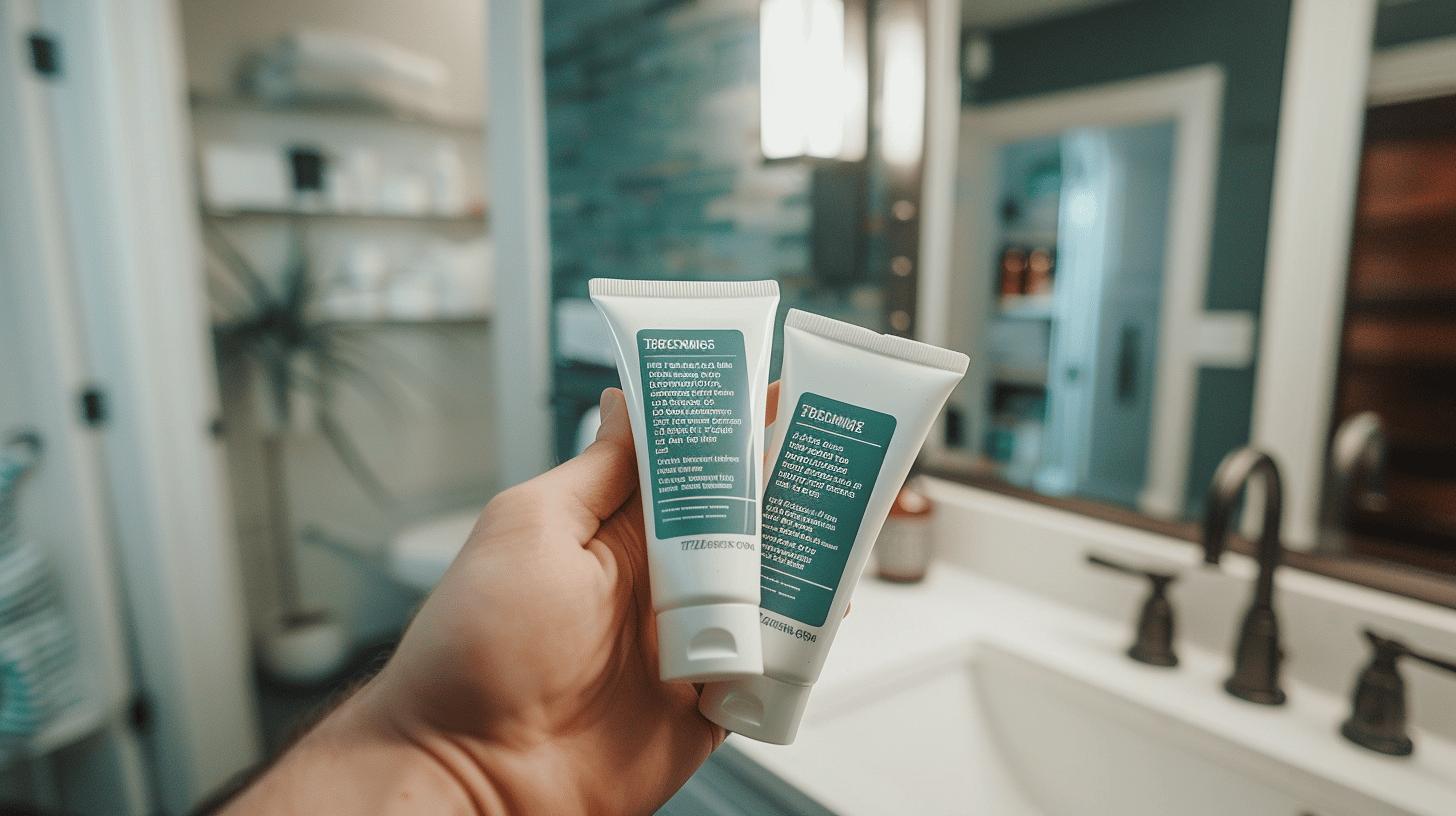
How long does it take for tattoo removal cream to show results?
Visible fading is typically reported after 6–8 weeks of consistent use.
User feedback across platforms like Reddit and Amazon suggests that results depend heavily on the product chosen, skin type, and the age and depth of the tattoo. For example, the Wrecking Balm Tattoo Fade System and Tat B Gone are repeatedly mentioned in tattoo removal cream reviews Amazon as producing noticeable fading within two months—especially on older or lighter tattoos. Photos posted online show partial removal or a lighter appearance of ink, particularly for small black tattoos on fair and light skin tones.
Do tattoo removal creams actually work?
They can fade tattoos but do not provide complete removal.
Based on tattoo removal cream reviews Reddit, users often see gradual lightening of the tattoo pigment, but rarely full erasure. Creams containing trichloroacetic acid (TCA) or other exfoliants remove surface layers of skin, which may make the tattoo less visible. However, deeper ink remains untouched. Skin type plays a major role: those with darker skin tones sometimes report skin discoloration and permanent lightening, while users with sensitive skin mention irritation. Aftercare is also a key factor—using a tattoo moisturiser or tattoo aftercare cream can help reduce the risk of a tattoo scar after prolonged use of chemical creams.
5 key takeaways from user reviews and before-and-after results:
- Results vary: some tattoos fade noticeably, others barely change after weeks of use
- Fading happens faster on older tattoos and fair skin tones
- Creams like Tattoo Destroyer and Wrecking Balm are frequently rated as the best tattoo removal cream options
- Proper aftercare with tattoo moisturiser or aftercare cream reduces irritation and promotes healing
- Photos show inconsistent outcomes—small tattoos fade better than large or coloured ones
Ingredients to Watch: What’s Inside the Best Tattoo Removal Creams
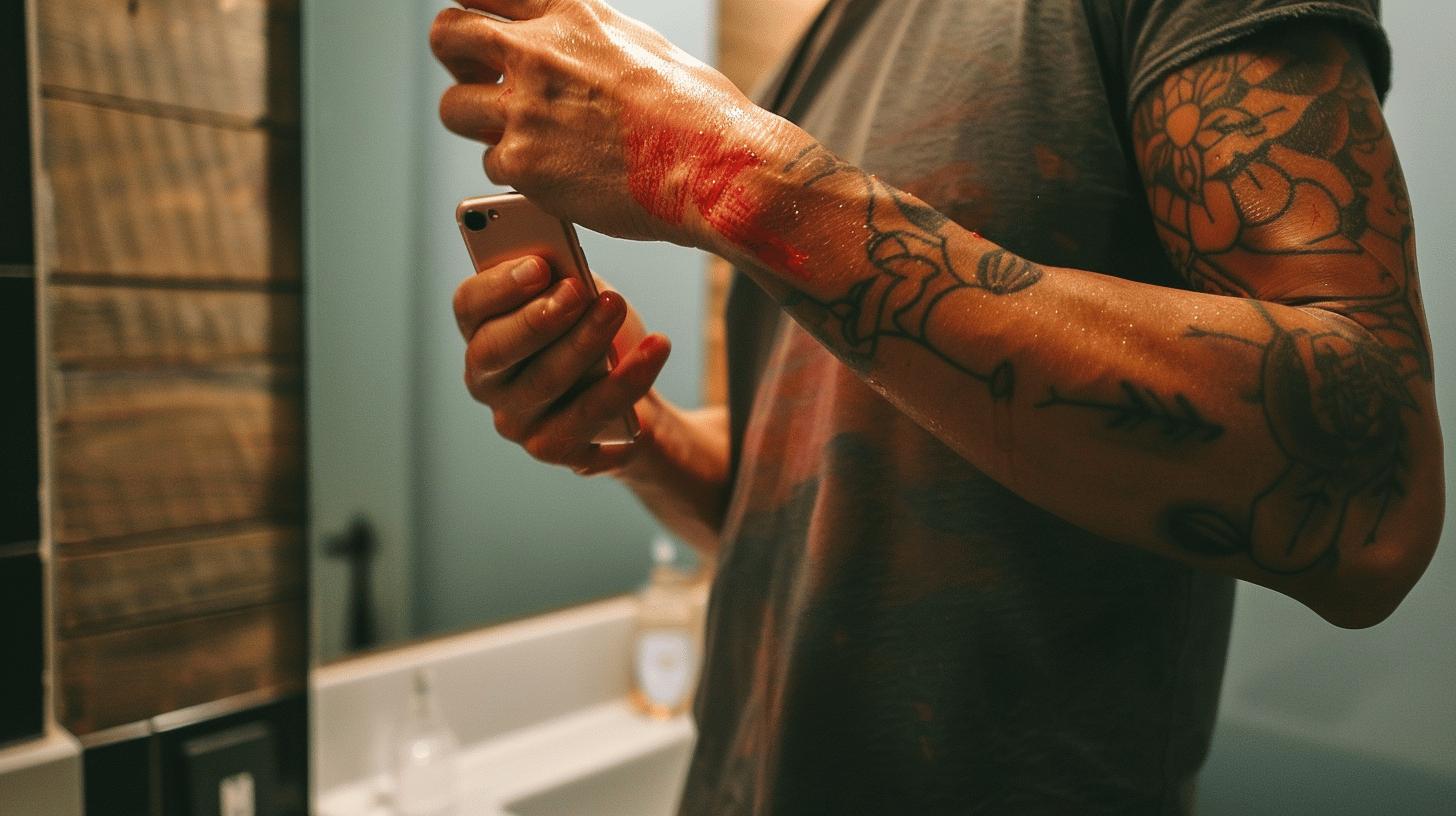
Is there an FDA approved tattoo removal cream?
No, the FDA has not approved any tattoo removal cream for complete removal.
Most removal creams on the market are classified as cosmetic products, which means they don’t undergo the same rigorous testing as medical treatments like laser tattoo removal. While some creams claim to be an effective tattoo removal solution, none are clinically proven to achieve complete removal of tattoo ink. Buyers looking for a safe tattoo removal cream should focus on ingredient transparency rather than marketing claims.
The most common active ingredients in the best tattoo removal cream options are chosen for their ability to fade pigment, remove surface skin layers, or support skin regeneration:
- Hydroquinone: A strong skin-lightening agent used in many tattoo lightening cream products. It reduces melanin production to make the tattoo less visible, but can cause irritation or skin discoloration and permanent lightening, especially in darker skin tones.
- Trichloroacetic acid (TCA): A powerful exfoliant often listed in tattoo fade creams. It removes dead skin layers, helping to shed superficial tattoo ink, but carries a risk of burns if misused.
- Kojic Acid: Derived from fungi, it works similarly to hydroquinone by reducing melanin. It’s seen in more chemical-free tattoo removal cream options because it’s milder and better suited to fair and light skin tones.
- Neem Oil: Found in natural tattoo products like Tattoo Destroyer, neem oil may help fade ink gently by promoting healthy skin care and regeneration.
- Alpha Arbutin: A plant-based compound that lightens dark spot pigmentation. It’s often preferred in tattoo removal creams work formulas aimed at sensitive skin.
5 ingredients to avoid in tattoo removal creams:
- Mercury compounds – toxic and banned in many countries
- High concentrations of alcohol – dries out skin and delays healing
- Parabens – linked to skin irritation and hormone disruption
- Phenol – corrosive and can cause chemical burns
- Unknown “proprietary blends” – vague labelling often hides harsh or unsafe chemicals
Skin Type and Tattoo Colour: What Works for You?
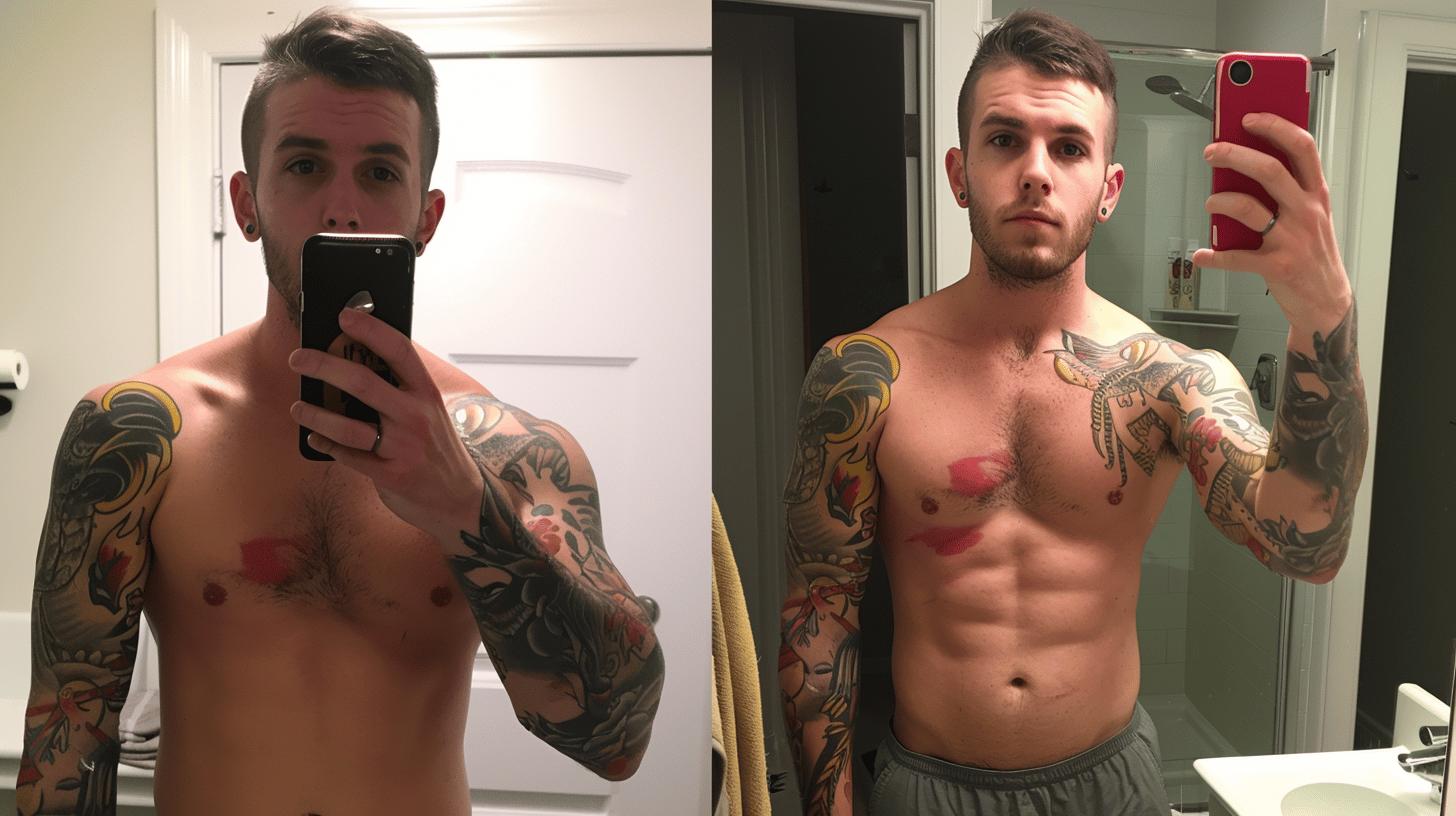
Do tattoo removal creams work better on certain skin types?
Yes, tattoo removal creams work best on fair to medium skin tones.
People with fair and light skin tones often see more noticeable results because there’s less risk of skin discolouration and permanent lightening when using strong ingredients like trichloroacetic acid (TCA) or hydroquinone. These creams can fade ink more evenly on lighter skin. In contrast, darker skin tones may be more prone to uneven fading, hypopigmentation, or irritation. For those with sensitive or darker skin, it’s safer to use a natural tattoo product like Tattoo Destroyer or a gentler tattoo moisturiser or tattoo aftercare cream alongside any fading agent.
Which tattoo colours are easiest to fade with cream?
Black ink is the easiest to fade using a tattoo removal cream.
This is because black absorbs more of the active bleaching or exfoliating agents and sits more uniformly in the skin. Bright colours like red and yellow contain pigments that resist breakdown, making them less responsive to tattoo fade creams. Multi-coloured tattoos are particularly difficult without laser treatment, and creams have a limited effect on them.
Tattoo colours ranked by removal difficulty (easiest to hardest):
- Black
- Blue
- Red
- Green/Yellow
Ideal product types by skin tone:
- Fair skin: TCA-based tattoo removal cream or powerful fading agent like Wrecking Balm
- Medium skin: Mild exfoliants combined with tattoo aftercare cream
- Dark skin: Natural creams (e.g. Tattoo Destroyer) and tattoo moisturiser to reduce irritation risk
Best Tattoo Removal Creams on Amazon: What Sells & Why
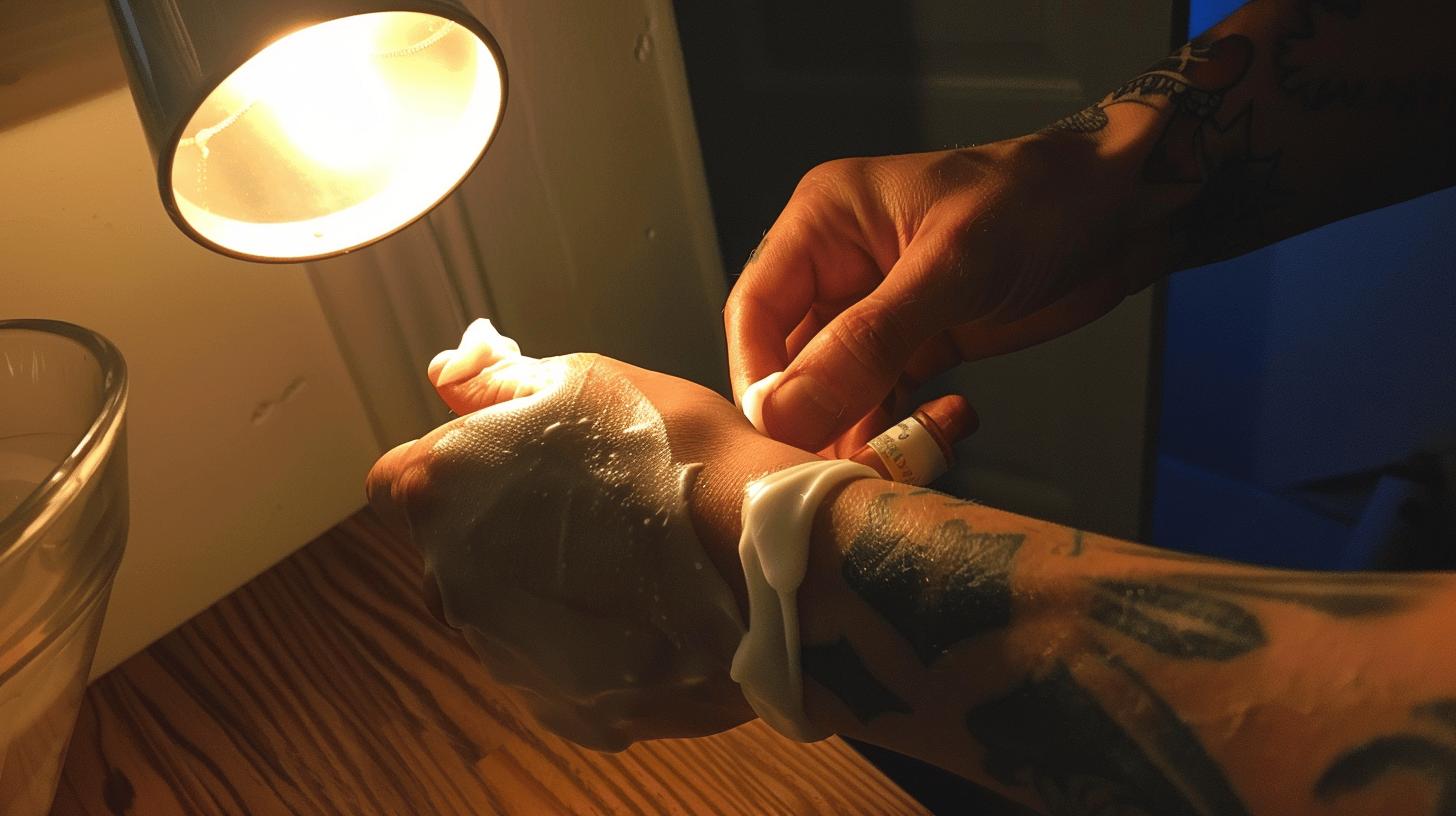
On Amazon, the best tattoo removal cream options tend to balance affordability, ease of use, and visible results. Shoppers often favour products that show consistent tattoo fade without harsh side effects like irritation or peeling. Based on tattoo removal cream Amazon reviews, three products stand out for their high ratings, practical application methods, and ingredient transparency. They’re ideal for people looking to remove a tattoo at home without laser.
- Wrecking Balm Tattoo Fade System
Known for its multi-step approach, the wrecking balm tattoo fade system includes a microdermabrasion tool and a fading cream. It actively exfoliates the area of the tattoo, helping to break down surface tattoo ink over time. Users praise it for working faster than most creams, particularly on small or older tattoos. It’s often bought by those who want a more aggressive method without committing to laser removal. - Tattoo Destroyer
This is a natural tattoo cream made with neem oil, aimed at gradual fading with minimal irritation. It’s a 1-step solution, making it easy for daily use. Tattoo Destroyer is popular among those with fair and light skin tones or sensitive skin who prefer avoiding trichloroacetic acid (TCA) and other harsher chemicals. Reviews often highlight how it helps make tattoos less visible over several weeks. - ROPALIA Tattoo Removal Cream
ROPALIA is a budget-friendly tattoo remover that appeals to first-time users. It’s frequently mentioned in tattoo removal cream reviews Amazon for its light formula and quick application. Though less potent than premium options, it’s praised for not irritating skin and being a good entry-level product for fading smaller tattoos.
Most removal creams on the market on Amazon fall between £8 and £40. Products that include tools like microdermabrasion heads or dual-step kits are priced higher, while 1-step creams with natural ingredients are more affordable. Shoppers looking for the best cream for tattoo removal Amazon typically check for visible results in review photos, low irritation risk, and whether the product works well on their skin type and tattoo colour. Value for money usually comes down to how long the cream lasts, how much fading occurs, and whether it’s suitable for safe, repeated use.
Side Effects and Risks of Tattoo Removal Creams
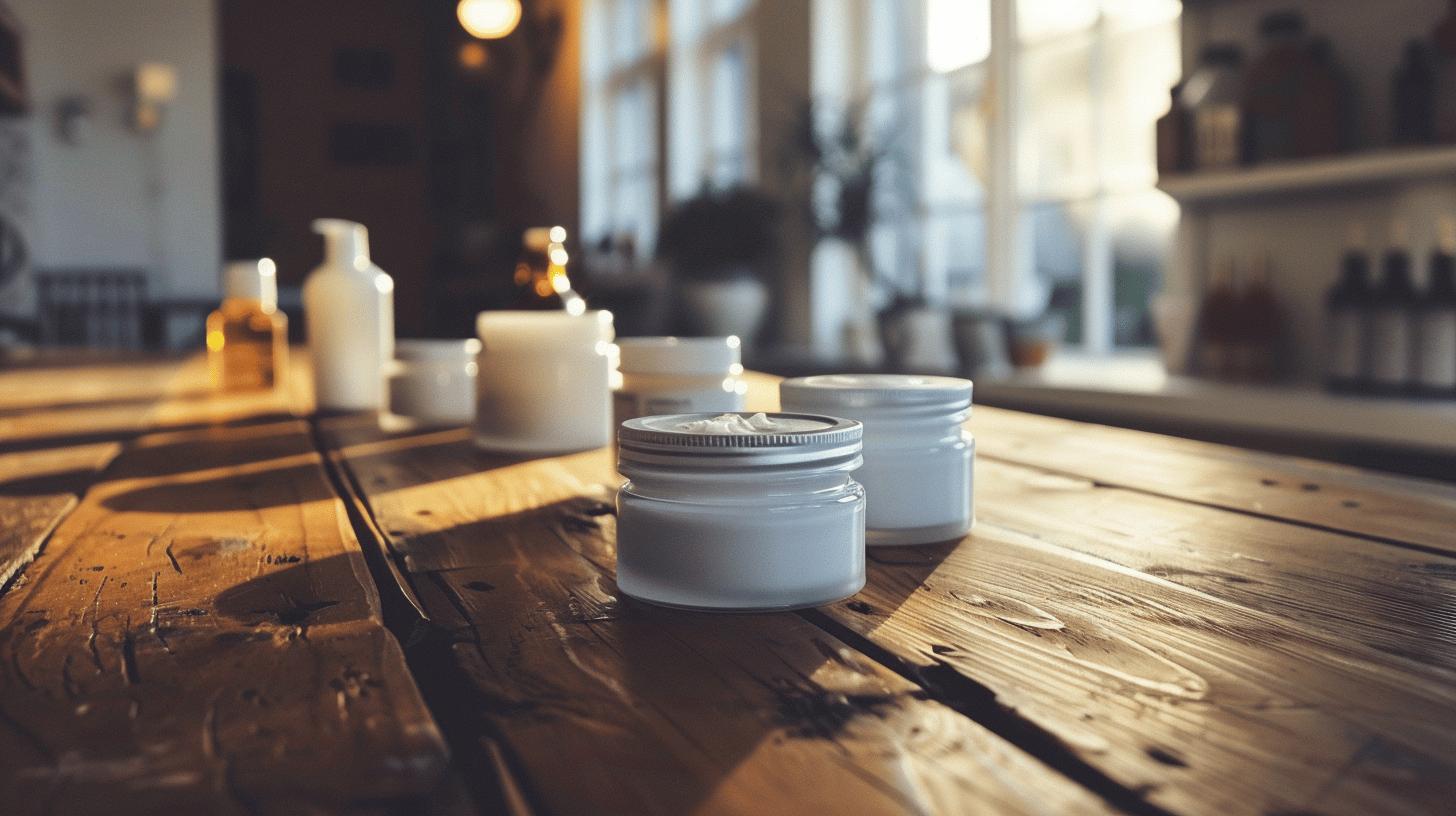
What are the most common risks of tattoo removal?
The most common risks include irritation, peeling, burning, skin discolouration, and scarring.
Tattoo removal creams work by using chemical agents to break down skin layers or lighten the surrounding area of the tattoo. Products containing hydroquinone or trichloroacetic acid (TCA) can lead to skin discoloration and permanent lightening, especially on darker skin tones. These ingredients are classed as aggressive bleaching or exfoliating acids, and although they’re common in many removal creams on the market, they can cause long-term skin sensitivity or worsen conditions like eczema or dermatitis. Repeated use on the same spot can increase the risk of a tattoo scar, especially if the skin is already damaged or sensitive.
Using a tattoo removal cream incorrectly can also cause avoidable damage. Applying the product too frequently, failing to follow instructions, or using it on broken skin raises the chance of adverse reactions. Patch-testing is essential—especially for those with sensitive skin types or medium to dark skin tones—to avoid burns or allergic responses. Some users try to speed up the fading process by scrubbing the area of the tattoo or combining creams with other products like hair removal cream or exfoliants, which can severely damage the skin barrier. Using fake or unregulated products, often sold online, increases the chance of harmful side effects due to unknown or unsafe ingredients not listed on the label.
6 warning signs a tattoo removal cream is unsafe or not suitable for continued use:
- Persistent redness or swelling after application
- Burning or stinging that lasts beyond a few minutes
- Skin peeling or blistering
- Uneven tattoo fade with patches of lighter or darker skin
- Visible scar formation or raised skin texture
- No ingredient list or unclear directions for use
How to Apply Tattoo Removal Cream Safely and Effectively

Applying a tattoo removal cream the right way increases the chance of visible tattoo fade and reduces the risk of irritation or scarring. Most removal creams on the market need to be applied consistently for several weeks, and the area must be treated gently throughout the process. Whether you’re using a basic cream gel or a multi-step system like the wrecking balm tattoo fade system, following a proper routine is key to reducing tattoo ink visibility and supporting healthy aftercare.
Follow these six steps to apply tattoo removal cream safely:
- Clean the area of the tattoo thoroughly
Wash with mild soap and lukewarm water to remove dirt, oils, and any tattoo moisturiser or lotion. Pat dry completely. A clean surface allows the tattoo remover to penetrate more effectively. - Apply a thin, even layer of the cream
Use clean hands or a spatula to spread the product over the area of the tattoo. Avoid rubbing it in aggressively—especially if using products with trichloroacetic acid (TCA) or exfoliating agents. - Leave the cream on for the recommended time
This varies by product. Some tattoo removal creams work best when left for 15–30 minutes, while others are designed for overnight application. Always follow the specific instructions on the label. - Rinse off or wipe as instructed
Remove the cream gently with a damp cloth or rinse with cool water. Pat dry. For multi-step systems, proceed to the next step such as exfoliation or applying a tattoo aftercare cream. - Apply a tattoo aftercare cream or repair cream
Products like tattoo moisturiser, aftercare butter, or anti scar tattoo balms can help soothe the skin and reduce the chances of irritation. This step is especially helpful for sensitive skin types. - Avoid sun exposure and harsh products
Keep the area covered or use SPF if going outside. Do not apply hair removal cream, perfumes, or alcohol-based products over the treated area, as this may cause skin discoloration and permanent lightening.
Most home tattoo removal cream products are applied once or twice daily for 4 to 8 weeks. Results vary depending on pigment, skin tones, and the depth of the tattoo ink. Fading tends to be most noticeable on older tattoos and fair and light skin tones. The average tattoo removal cream price ranges from £8 to £50, with more complex kits—like those including microdermabrasion tools—on the higher end. For best results, consistency and proper tattoo care make all the difference.
Best Numbing Creams for Tattoo Removal Sessions
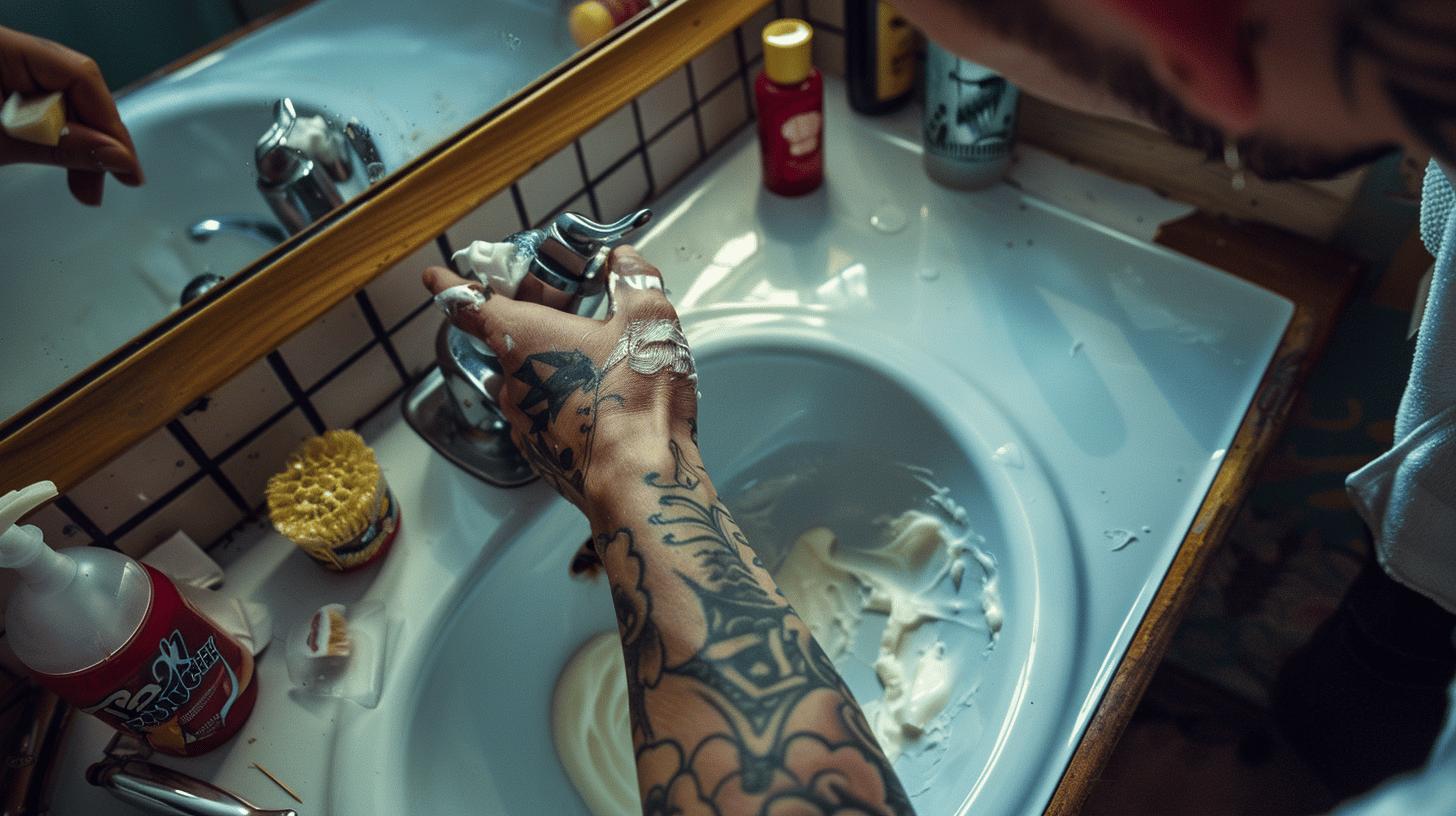
What is the best numbing cream for tattoo removal?
Emla is widely considered the best numbing cream for tattoo removal due to its consistent effect and availability in the UK.
Numbing creams are used before tattoo removal procedures—whether it’s laser tattoo removal or applying a tattoo removal cream—to reduce discomfort. These creams contain local anaesthetics like lidocaine that temporarily block nerve signals in the area of the tattoo. Most effective options contain between 3% and 5% lidocaine and are applied 30–45 minutes before treatment begins. They do not interfere with laser treatment or the action of fading agents like trichloroacetic acid. For laser removal, numbing creams can drastically reduce pain levels, especially on sensitive areas or skin types prone to irritation.
Top 4 numbing creams for tattoo removal sessions:
- Emla (5% lidocaine) – A pharmacy-grade anaesthetic cream that’s often used before laser procedures. Apply a thick layer under plastic wrap and leave for 45 minutes.
- TKTX (4–5% lidocaine) – Known as one of the strongest numbing cream for tattoo removal. Works well for large or painful areas and lasts up to 4 hours.
- Dr. Numb (5% lidocaine) – Fast-acting and suitable for sensitive skin tones. Apply 30 minutes before tattoo removal.
- Numb Master (5% lidocaine) – A budget-friendly option with reliable numbing for smaller areas or touch-ups. Best for short tattoo fade sessions.
In the UK, these creams are available from pharmacies, specialist tattoo supply shops, and online retailers. For safe use, always patch test and follow instructions to avoid any reaction. Using a reliable numbing cream alongside your tattoo removal or tattoo removal aftercare cream can make the experience far more manageable, especially during multiple laser sessions or when applying strong exfoliants like TCA.
Is There a Permanent Tattoo Removal Cream?
Is there a permanent tattoo removal cream?
No, there is no clinically proven permanent tattoo removal cream.
Any product claiming to remove a tattoo completely is making a marketing claim, not a medical one. Tattoo ink is deposited deep into the dermis, the second layer of skin, while most tattoo removal creams only interact with the epidermis, the outermost layer. Ingredients like trichloroacetic acid (TCA) or skin lighteners may help make a tattoo less visible, especially on fair and light skin tones, but they cannot reach or break down deep tattoo ink. Only laser tattoo removal or surgical procedures are capable of full ink breakdown and clearance.
Do tattoo removal creams work at all?
Yes, but only for fading—not complete removal.
Many tattoo removal creams work by exfoliating the skin or lightening the pigment to reduce contrast between ink and skin. Products like tattoo destroyer or the wrecking balm tattoo fade system are popular for promoting tattoo fade, especially on small tattoos or older designs. But even the best tattoo removal cream cannot promise complete removal. Brands that market themselves as a permanent tattoo removal cream are misleading buyers. It’s essential to understand that these creams are best used for partial fading and should be paired with proper tattoo care and aftercare cream to minimise the risk of a tattoo scar or skin discoloration and permanent lightening.
What to watch out for when evaluating tattoo removal product claims:
- Claims of “permanent removal” or “laser-like results” without clinical evidence
- No full ingredient list or vague terms like “proprietary blend”
- Before-and-after photos that show unrealistic results without context or timeframes
Final Words
Tattoo removal creams work by targeting surface-level tattoo ink, offering a gradual, non-invasive way to fade unwanted tattoos.
From exfoliating agents like TCA to bleaching ingredients such as hydroquinone, each product has its own method for breaking down pigment and reducing visibility. While laser tattoo removal remains the most effective option, many choose topical creams for affordability and ease—especially when used with proper tattoo care and aftercare cream.
User reviews of products like Wrecking Balm Tattoo Fade System and Tattoo Destroyer show that, although results vary widely by skin type and ink age, the best tattoo removal creams work best on older, lighter tattoos.
Before choosing a cream gel or balm, check ingredient safety, skin compatibility, and tattoo colour. Applying a tattoo moisturiser or tattoo removal aftercare cream post-treatment can reduce the risk of tattoo scar formation and help soothe irritated skin.
For anyone looking to fade a small tattoo without professional laser removal, the best cream for tattoo removal offers an accessible way to start the process—just take time, follow aftercare, and manage expectations.
FAQ
Q: What is the best tattoo removal cream that actually works?
The best tattoo removal cream based on user reviews is Wrecking Balm Tattoo Fade System. It uses microdermabrasion and a fading balm to target tattoo ink, making it one of the most effective tattoo removal creams available.
Q: Do tattoo removal creams really work to fade tattoos?
Yes, tattoo removal creams can reduce pigment visibility, but results vary. Most creams only fade surface ink and won’t fully remove a tattoo, especially on coloured or deep ink tattoos.
Q: Is there any permanent tattoo removal cream?
No permanent tattoo removal cream exists. Creams may fade tattoos over time but cannot fully remove ink. Only laser treatments or surgical methods offer complete tattoo removal.
Q: Which cream is good for tattoo removal on Amazon?
Popular tattoo removal creams on Amazon include Wrecking Balm, Tattoo Destroyer and ROPALIA. Buyers favour these for their price, tattoo fading results and quick application times.
Q: What are the risks of tattoo removal creams?
Common risks of tattoo removal include skin irritation, peeling, scarring, discolouration, and skin sensitivity—especially with creams containing TCA or hydroquinone. Always patch-test before full use.
Q: How does tattoo removal cream work on skin and ink?
Tattoo removal creams work by using active ingredients like trichloroacetic acid (TCA) or bleaching agents to break down ink pigments in the skin’s outer layer over time.
Q: Can tattoo removal creams remove black ink completely?
Tattoo removal creams can fade black ink more effectively than coloured inks, but they typically won’t achieve complete tattoo removal—especially on deep or professional tattoos.
Q: What’s the difference between laser tattoo removal and tattoo fade creams?
Laser tattoo removal targets deeper ink and offers faster, complete results. Creams are pain-free and cheaper but work slowly and may only fade the tattoo partially.
Q: What tattoo removal creams are best for dark spot and scar avoidance?
Tattoo Destroyer and Inked Up are gentler on skin types prone to scars or dark spots. Avoid harsh options with high TCA if your skin is sensitive.
Q: How long does it take for tattoo removal cream to show results?
Visible tattoo fading from creams normally starts within 6–8 weeks with consistent use, depending on the skin type, ink depth, and the product used.
Q: Are there natural tattoo removal cream options?
Yes, creams like Tattoo Destroyer use natural ingredients such as neem oil. They are gentler and reduce the chance of side effects like skin damage or irritation.
Q: Can you use tattoo removal cream on all skin types?
Tattoo removal creams are more effective on fair or light skin tones. Darker skin tones may experience discolouration or uneven fading, so patch-testing is advised.
Q: What ingredients should be avoided in tattoo removal creams?
Avoid creams with parabens, high alcohol content, and mercury-based compounds, as they can increase the risks of scarring or skin pigmentation changes.
Q: Is there a numbing cream for tattoo removal sessions?
Yes, numbing creams like Emla, TKTX, and Dr. Numb with 5% lidocaine can be applied before removal to reduce pain, especially during laser treatment or dermabrasion.
Q: What is the safest way to apply tattoo removal cream?
Apply cream to clean, dry skin 1–2 times daily. Avoid sun exposure, don’t use on broken skin, and stop use if signs of irritation or skin peeling appear.
Q: Which tattoo removal creams are rated highest in the UK?
Top UK-rated tattoo removal creams include Wrecking Balm Tattoo Fade System, Tattoo Destroyer, Inked Up and Tat B Gone. Users like their ease of use and results.

